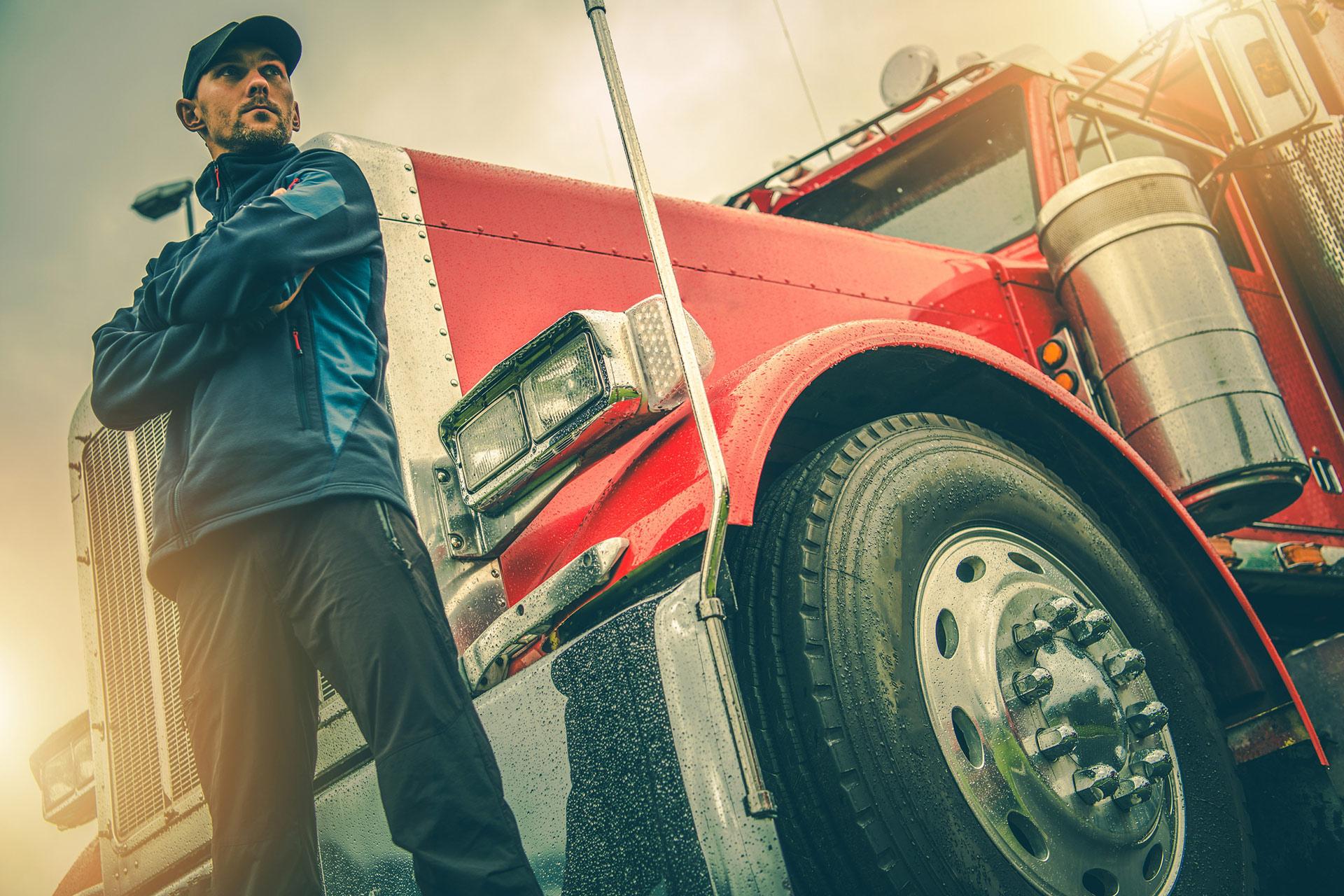Essential Port Freight Pickup Tips For Truck Drivers
August 12th, 2025
By Arrow Truck Sales

Port freight is a world of its own. For drivers accustomed to over-the-road hauls or regional routes, picking up loads at a port introduces new rules, tight schedules, security protocols, and logistics that don't always follow a consistent script. Knowing how to navigate port pickups can mean the difference between a profitable day and hours of unpaid waiting.
Let's examine how port freight pickup operates, the challenges drivers can anticipate, and how to remain efficient, compliant, and competitive in this rapidly evolving segment of the trucking industry.
What Makes Port Freight Different?
Unlike warehouse or distribution center pickups, port work is structured around the movement of containerized freight. Drivers haul empty chassis into port terminals, pick up loaded containers, and often move them short distances to intermodal yards, local warehouses, or rail ramps. This specialized transport is called drayage.
Key differences from over-the-road freight include:
High-security access requirements like TWIC cards
Appointment scheduling systems that differ by port and terminal
Short-haul nature with tight turnarounds
Terminal congestion and limited parking
Heavy regulatory oversight, especially at larger ports like LA/Long Beach, New York/New Jersey, or Savannah
Port freight is regional, detail-heavy work, and it rewards drivers who can stay organized and adapt to change.
Credentials and Compliance: Know Before You Go
Before you even roll onto port property, you'll need to have your credentials in order:
TWIC Card: The Transportation Worker Identification Credential is a must-have. Without it, you won't get past port security.
Terminal Registration: Most terminals require your company and truck to be registered in advance with their system.
Drayage Agreements: If you're working with a broker or intermodal carrier, confirm your contract and load assignment before heading to the port.
Miss one of these steps, and your day is likely shot before it begins.
Plan Ahead for Efficiency
Appointments are often required—and often tight. If you miss your window, you may be pushed to the end of the line. Good planning makes a difference:
Check chassis condition before arrival to avoid delays at the yard
Know the terminal layout so you don't waste time getting lost
Review port-specific rules (some restrict engine idling, others have staging areas offsite)
Load apps or terminal status tools used by the port's trucker communication system
Port work moves fast until it doesn't. Delays are common, but you can reduce their impact by showing up prepared.
Expect Congestion
Heavy traffic inside the port is normal. So are long waits for cranes to drop containers onto chassis. Stay calm, be patient, and build that time into your route planning.
In some terminals, wait times can stretch to multiple hours. That's why solid time management is key. Don't schedule other deliveries too tightly around port runs.
For new drivers, it's worth asking dispatch or experienced colleagues how specific terminals operate. Little things, such as whether you need to scale before exit or if return lanes are separate from inbound, can make or break your timing.
Container Yard Navigation: The Hidden Challenge
Even after you're inside, the real work starts with finding the container. Some yards are well marked; others feel like puzzles. Be prepared to:
Scan the lot for your specific container number
Work with port staff or crane operators for positioning
Double-check paperwork before exit (mismatched info can get you sent to the back of the line)
A good GPS that tracks container yard layouts can help, but a sharp eye and a little experience go a long way. New drivers should take it slow until they're familiar.
Proper Truck Setup Matters
Port work places unique demands on your equipment. Not every used semi-truck is ready for the start-and-stop, short-haul demands of drayage. Some things to consider:
Shorter wheelbase and tighter turning radius make yard navigation easier
Upgraded braking systems help with stop-and-go movement
Modern GPS and fleet tracking tools simplify port routing and appointment management
Strong torque is more useful than top-end speed for this kind of driving
That's why partnering with a dealer who knows this segment makes a difference.
Arrow Truck Sales offers used semi-trucks well-suited for port freight, including late-model options that come with telematics, service history, and protection plans. Our experience can help you find a rig that fits the real-world demands of port-based hauling.
Tips for Owner-Operators New to Port Work
If you're just getting into drayage, here are a few habits that pay off:
Join port driver forums or Facebook groups to get local tips
Check container availability before arrival to avoid dry runs
Document everything in case of port disputes or billing issues
Keep safety gear on hand like vests, hard hats, and gloves
Inspect containers for visible damage before leaving the port
Every port has its own culture and pace. Learn the flow, follow the rules, and you'll find ways to streamline even the most chaotic days.
Professionalism Plays a Part
Ports are busy, stressful places. Staying professional even when others aren't can earn you respect and faster help when something goes wrong. Terminal staff have long memories. Drivers who follow the rules, communicate clearly, and avoid drama often get prioritized.
That professionalism extends to your rig, too. A clean, well-maintained truck shows you're serious. And in an industry where delays cost money, that can lead to better loads and faster turnaround.
Picking up freight at ports isn't like any other kind of trucking. It comes with challenges, but also opportunities. If you plan well, invest in the right gear, and keep learning, you can build a solid drayage business.
Arrow Truck Sales is here to help you make that leap. Whether you need a rig that's ready for tight terminal turns or one that comes with the right support package, we've got you covered with insight, inventory, and deals built for real truckers. Check our current inventory online today for rigs that can make your port pickups smoother and more efficient.

